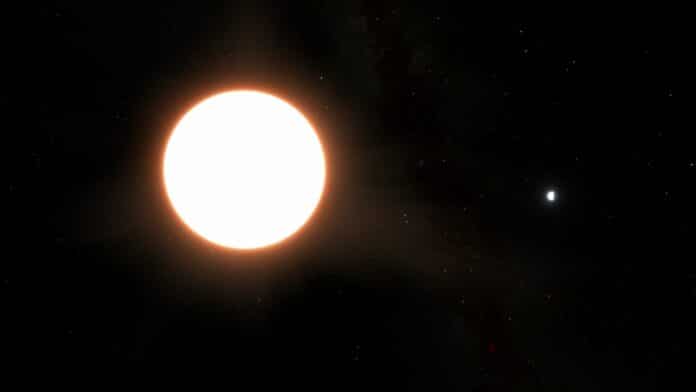Venus is the brightest object in the night sky despite the moon. Its thick cloud layer reflects around 75% of the Sun’s light. By comparison, Earth only reflects around 30% of incoming sunlight.
Planet LTT9779 b is the first exoplanet discovered by astronomers that can match Venus in brightness. According to recent, accurate measurements by the ESA’s Cheops mission, this planet reflects 80% of the light from its host star.
This ultra-hot exoplanet that orbits its host star in less than a day is covered with reflecting metal clouds, making it the shiniest exoplanet yet discovered, according to data from ESA’s exoplanet spacecraft Cheops.
The exoplanet is the largest “mirror” in the known universe and is around the size of Neptune. Its excellent reflectivity is caused by the metallic clouds that cover it. These are mostly comprised of titanium combined with silicate, the same material that makes up glass and sand.
James Jenkins, an astronomer at Diego Portales University and CATA (Santiago, Chile), said, “Imagine a burning world, close to its star, with heavy clouds of metals floating aloft, raining down titanium droplets.”
The unexpectedly high albedo of LTT9779 b is due to the planet’s star-facing side being predicted to be around 2000 °C in temperature. The atmosphere of this planet should be heated enough to prevent the formation of clouds formed of glass or metal at temperatures even higher than 100 °C.
Vivien Parmentier, a researcher at the Observatory of Côte d’Azur (France) and co-author of this research, said, “It was a puzzle until we realized we should think about this cloud formation in the same way as condensation forming in a bathroom after a hot shower. To steam up a bathroom, you can either cool the air until water vapor condenses or keep the hot water running until clouds form because the air is so saturated with vapor that it simply can’t hold anymore. Similarly, LTT9779 b can form metallic clouds despite being so hot because the atmosphere is oversaturated with silicate and metal vapors.”
Besides being shiny, another surprising thing about LTT9779 b is its size and temperature- making it ultra-hot Neptune. No other planets of this size and mass have been found to orbit so close to their star. This means it lives in what’s known as the ‘hot Neptune desert.’
A year on LTT9779 b lasts just 19 hours and has a radius 4.7 times that of Earth. All previously identified planets that orbit their star in less than a day are either rocky planets with a radius of less than two Earth radii or “hot Jupiters,” gas giants with radii at least ten times greater than Earth’s.
Vivien said, “It’s a planet that shouldn’t exist. We expect planets like this to have their atmosphere blown away by their star, leaving behind bare rock.”
First author Sergio Hoyer of the Marseille Astrophysics Laboratory comments: “‘We believe these metal clouds help the planet to survive in the hot Neptune desert. The clouds reflect light and stop the planet from getting too hot and evaporating. Meanwhile, being highly metallic makes the planet and its atmosphere heavy and harder to blow away.”
ESA’s exoplanet-characterizing Cheops mission observed LTT9779 b when it moved behind its host star to ascertain its characteristics. The star and planet send more light towards the space telescope just before the planet is out of view than just after because the planet reflects light. You may determine how much light the planet reflects by comparing the visible light received just before and after the planet is hidden.
Sergio said, “This project relied on Cheops’ precision and 24/7 coverage. “Precisely measuring the tiny change in signal from the star eclipsing the planet was only possible with Cheops.”
ESA’s Cheops project scientist Maximilian Günther adds: “Cheops is the first ever space mission dedicated to the follow-up and characterization of already known exoplanets. Unlike large survey missions focused on discovering new exoplanet systems, Cheops has enough flexibility to focus on interesting targets swiftly and can reach coverage and precision that we often simply cannot get any other way.”
ESA science operations scientist Emily Rickman said, “By looking at the same exoplanet with different instruments, we get the full picture. LTT9779 b is an ideal target for follow-up with the exceptional capabilities of both the Hubble and James Webb space telescopes.”
“They will allow us to explore this exoplanet with a wider wavelength range, including infrared and UV light, to better understand the composition of its atmosphere.”
Journal Reference:
- Hoyer et al. The extremely high albedo of LTT 9779 b was revealed by Cheops. Astronomy & Astrophysics. DOI: 10.1051/0004-6361/202346117
